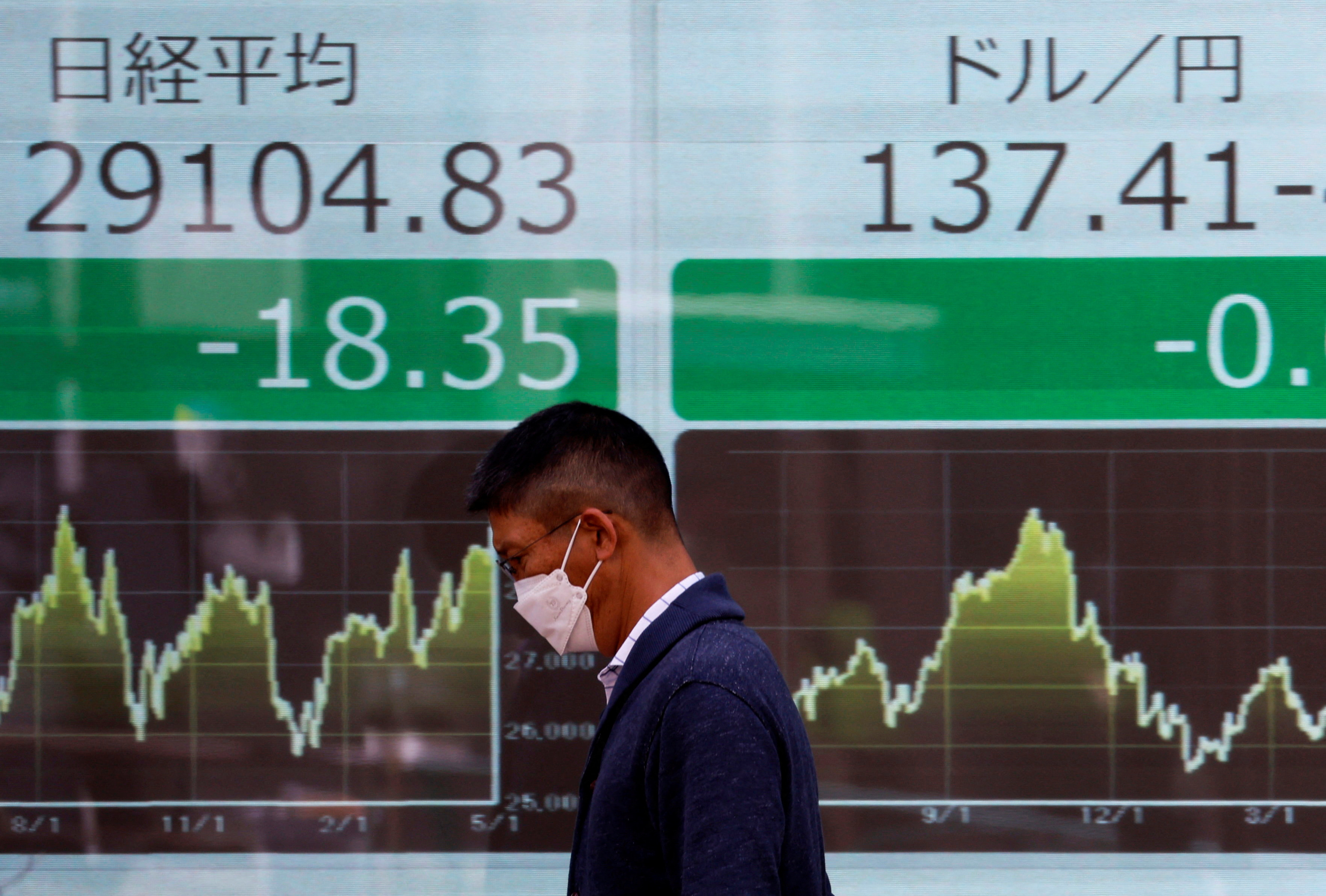
A man walks past an electric monitor showing the Nikkei stock average and the Japanese yen exchange rate outside a brokerage house on May 2, 2023 in Tokyo, Japan. REUTERS/Issei Kato Obtain licensing rights
LONDON/SYDNEY, Aug 28 (Reuters) – Global stocks rallied on Monday after China announced measures to support its faltering markets, but Western markets remained cautious ahead of European and U.S. economic data expected later in the week as central bankers decide their next steps. .
Beijing announced on Sunday that it would halve a stamp duty on stock trading in the latest attempt to boost the struggling market and followed up with measures to support housing. China’s securities regulator has also approved the launch of 37 retail funds.
World shares (.MIWD00000PUS) rose 0.3% in European trade. European shares also rose, led by technology stocks and China-exposed automakers. The pan-European stock index (.STOXX) rose 0.6%. The FTSE is closed for the holidays.
Profits at China’s industrial firms fell 6.7% in July, extending the decline to a seventh straight month this year.
Additionally, China Evergrande Group ( 3333.HK ) lost up to 80% of its market value on Monday as its shares resumed trading in an important step for the world’s most indebted asset company as it seeks to restructure its foreign debt.
Foreign investors continued to exit Chinese stocks, paying a net 8 billion yuan ($1.10 billion), according to data from the Hong Kong Stock Exchange.
The Chinese blue-chip stock index (.CSI300) and the Shanghai Composite (.SSEC) rose.
“If everything is happy, there’s no need for stimulus,” says Florian Ailbo, head of macro at Lombard Odier Investment Managers.
Ielpo said that unlike the wholesale packages announced in previous years, the latest measures represent a shift by the Chinese government and an attempt to tactically boost market sentiment.
Attention now shifts to the official PMI for August due out on Thursday, which is expected to run further in the red.
S&P 500 futures and Nasdaq futures rose 0.2% and 0.3%, respectively, indicating that the benchmark indices could extend last week’s modest gains.
The market overcame a somewhat dovish outlook from Federal Reserve Chairman Jerome Powell, who reiterated his desire to raise rates again but promised to move “carefully.”
“The central bank’s outlook has now become 50 shades of hawkish. We know rates will stay above 5%, but the question is for how long and how high?” Said Ailbo of Lombard Odier.
The future implies an 80% chance of no change at the September 20 meeting, but a 58% probability of a rise by year-end.
Negative risk in jobs
Much depends on the flow of US data, including this week’s ISM survey on manufacturing, along with reports on wages, core inflation and consumer spending.
Average forecasts for payrolls rose by 170,000 in August with the unemployment rate steady at 3.5%.
JP Morgan analysts warned that job gains could be dampened by an entertainment industry strike in Hollywood and forecast an increase of just 125,000.
This week’s EU inflation figures could be instrumental in whether the European Central Bank (ECB) decides to hike next month.
The market is evenly divided on whether there will be another rate hike to 3.75%, with ECB President Christine Lagarde insisting on Friday that policy should be restrained.
That was a common theme among western central banks, with Bank of England Deputy Governor Ben Broadbent saying over the weekend that rates should remain high “for some time to come”.
The odd man out, Bank of Japan Governor Kazuo Uede on Friday emphasized the need for policy to be more loose.
That divergence kept the yen under pressure and the dollar was firm at 146.54 early Monday, near Friday’s 10-month high of 146.64. The euro hit its highest level since October last year at 158.27 yen.
The dollar fell from its multi-week high to $104.16 against a basket of currencies.
Yields on U.S. two-year notes were mostly flat after hitting record highs on Friday in early July.
Higher yields and a relatively strong dollar were an upside for gold, which was idle at $1,914 an ounce.
Oil prices got some support from a storm forming in the Gulf of Mexico and support from China.
Brent was up 20 cents at $84.68 a barrel, while U.S. crude was up 26 cents at $80.09 a barrel.
Reporting by Nell Mackenzie and Wayne Cole; Editing by Stephen Coates
Our Standards: Thomson Reuters Trust Principles.
